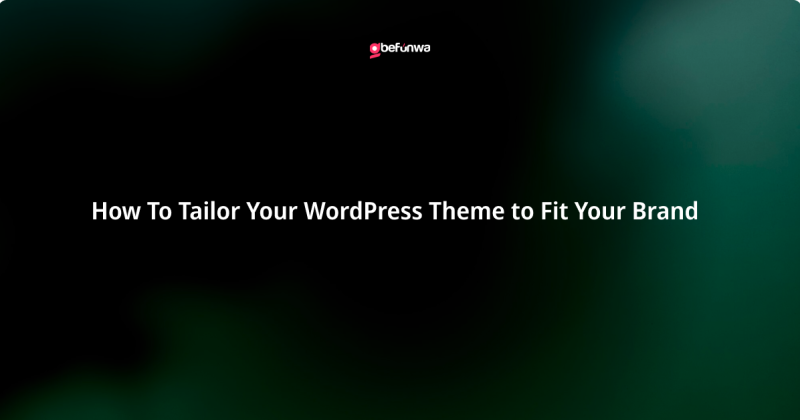
Your website is often the first point of contact between your audience and your brand. To make a lasting impression and establish a strong brand identity, it’s crucial to tailor your WordPress theme to reflect your brand’s personality, values, and aesthetic. Here’s a detailed guide on how to customize your WordPress theme to fit your brand seamlessly.
Before making any changes to your WordPress theme, take the time to define your brand identity. Consider your brand’s mission, values, target audience, and unique selling proposition (USP). Create brand guidelines that outline your brand’s visual elements, such as colors, typography, imagery, and tone of voice.
Select a WordPress theme that aligns with your brand identity and provides the flexibility to customize its appearance and functionality. Look for themes that offer robust customization options, support for custom branding elements, and compatibility with popular plugins that enhance your site’s features.
Use your brand’s color palette and typography to customize the appearance of your WordPress theme. Choose colors that reflect your brand’s personality and evoke the desired emotions in your audience. Ensure consistency in typography across your site by selecting fonts that are legible and align with your brand’s style.
Personalize the header of your WordPress theme by incorporating your brand’s logo and tagline. Ensure that your logo is displayed prominently and is optimized for various screen sizes. Customize the header layout, size, and navigation menu to enhance brand visibility and improve user experience.
Tailor the layout and content of your homepage to effectively communicate your brand’s message and showcase your products or services. Use custom widgets, featured sections, and sliders to highlight key content and engage visitors. Consider incorporating multimedia elements such as images, videos, or testimonials to add visual interest and credibility.
Utilize the footer section of your WordPress theme to reinforce your brand identity and provide essential information to visitors. Customize the footer widgets, copyright text, and social media icons to align with your brand’s aesthetics and encourage social engagement. Ensure seamless integration with your social media profiles to extend your brand’s reach and connect with your audience.
Customize the page templates and layouts of your WordPress theme to create a cohesive and visually appealing user experience. Modify the default templates for pages, posts, archives, and categories to reflect your brand’s design standards and content hierarchy. Experiment with different layout options, sidebars, and content blocks to optimize readability and engagement.
Incorporate custom call-to-action buttons and forms throughout your WordPress theme to drive user engagement and conversions. Design visually appealing buttons that stand out and use compelling language to encourage action. Customize forms for newsletter subscriptions, contact inquiries, or lead generation to capture valuable user data and nurture customer relationships.
Ensure that your customized WordPress theme is fully responsive and optimized for mobile devices. Test your site on various screen sizes and devices to ensure consistent display and functionality. Optimize images, font sizes, and navigation menus for smaller screens to provide a seamless user experience across all devices.
After customizing your WordPress theme to fit your brand, thoroughly test your site to identify any issues or inconsistencies. Solicit feedback from users and stakeholders to gather insights and make necessary adjustments. Continuously iterate and refine your theme customization to maintain alignment with your evolving brand identity and user preferences.
Tailoring your WordPress theme to fit your brand is essential for creating a cohesive and memorable online presence that resonates with your audience. By defining your brand identity, choosing a theme that aligns with your brand, customizing colors, typography, headers, footers, page layouts, and call-to-action elements, optimizing for mobile responsiveness, and testing and iterating on your customizations, you can create a visually stunning and user-friendly website that effectively communicates your brand’s story and values.
Deborah Oludimu is an experienced content writer with 3+ years of experience. She is skilled in research, writing, and editing to produce high-quality, engaging content across industries. Deborah is passionate about creating content that informs and inspires
© 2025 GBEFUNWA.COM. All rights reserved.
The WordPress® trademarks are the intellectual property of the WordPress Foundation, and the Woo® and WooCommerce® trademarks are the intellectual property of WooCommerce, Inc. Uses of the WordPress®, Woo®, and WooCommerce® names in this website are for identification purposes only and do not imply an endorsement by WordPress Foundation or WooCommerce, Inc. gbefunwa is not endorsed or owned by, or affiliated with, the WordPress Foundation or WooCommerce, Inc.